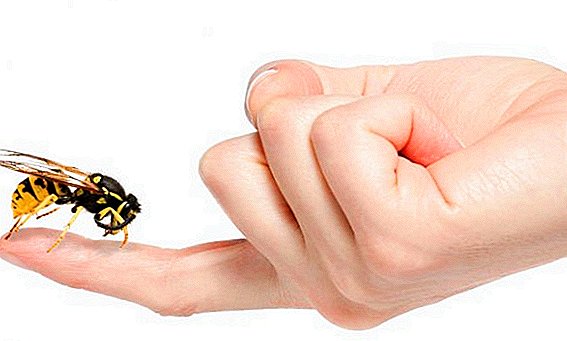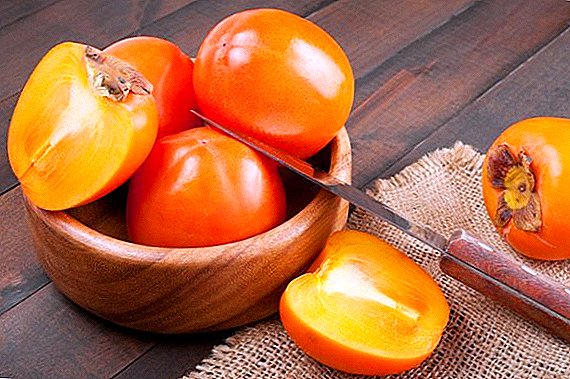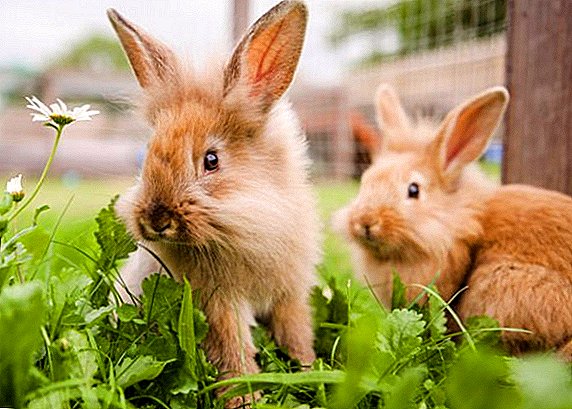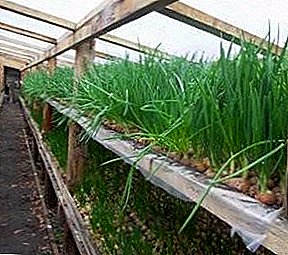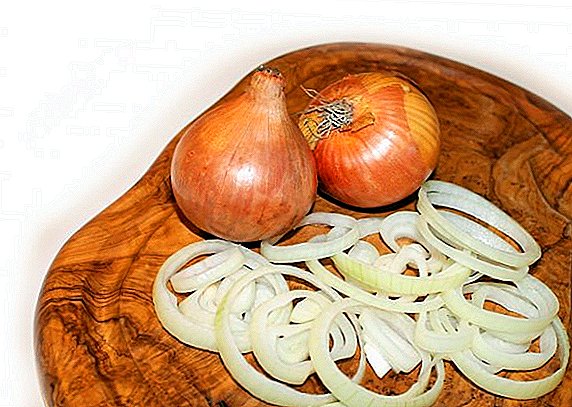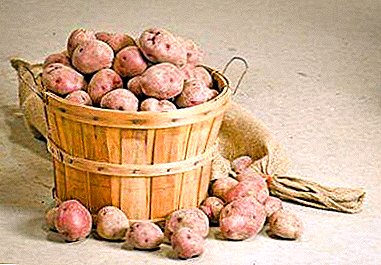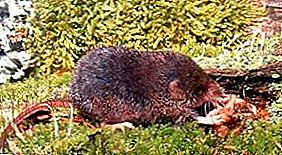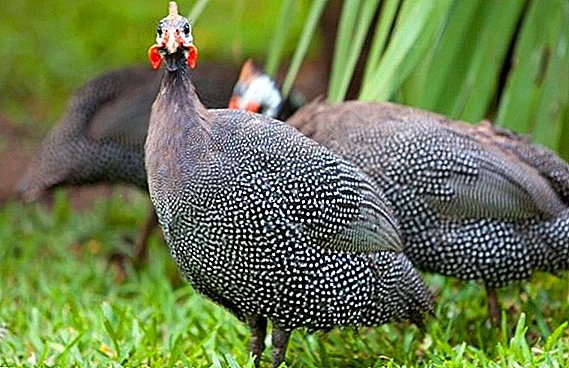 Guinea fowls are quite rare in private farmsteads, although their meat and egg products are highly valued due to their quality and nutritional value. In addition, these motley pets are a true decoration of the yard. We will tell about their features and lifestyle later in the article, as well as teach you to distinguish between fowl meat and eggs.
Guinea fowls are quite rare in private farmsteads, although their meat and egg products are highly valued due to their quality and nutritional value. In addition, these motley pets are a true decoration of the yard. We will tell about their features and lifestyle later in the article, as well as teach you to distinguish between fowl meat and eggs.
History reference
 The first to know about the existence of wild guinea fowls were south african tribes. And in the V century BC. This bird was discovered by the ancient Greeks, bowing before it. 200 years later, when the Punic Wars broke out, the Romans became interested in colorful birds.
The first to know about the existence of wild guinea fowls were south african tribes. And in the V century BC. This bird was discovered by the ancient Greeks, bowing before it. 200 years later, when the Punic Wars broke out, the Romans became interested in colorful birds.
In those days it was a very expensive living creature that only wealthy individuals could afford. It valued everything: eggs, meat and feathers. After Caligula came to power, the fame of the colorful birds spread to the very west Asia and Byzantium.
Did you know? Modern American poultry farmers have discovered another positive quality in the fowl: the bird feeds on Ixodes and deer mites, which throughout the summer are hiding in the grass, threatening a person with the spread of dangerous diseases.
However, in the Middle Ages, the former popularity of guinea fowers was forgotten, and the birds began to disappear from the household. Repeated their "discovery" occurred only after the invasion of the Spaniards into the territory Guineawhere for centuries they have grown these representatives of the fauna. 
Description and appearance
Modern zoologists distinguish 6 species of birds from different genera of the hen family. All of them are characterized by a specific pearl ebb of feathers and a peculiar body structure. By these signs of exotic birds can be found from afar.
Common guinea fowls have a dark feather with small white specks. They also have peculiar, cone-shaped, fleshy growths on the crown and under the neck. The leathery, bare area of the body stands out in a contrasting bluish tinge on the red-gray collar.
It is interesting to get acquainted with the species of wild and breeds of domestic guinea fowls.
The tail of birds is short, with lower pubescence. The legs are gray, the wings are rounded, the body is heavy and dense, the back is rounded. Guinea fowl beak - hooked, medium size. The body weight of females reaches 1.5 kg, and males - 1.7 kg. 
Where dwells
Scientists consider the homeland of guinea fowls to be the central and southern regions of Africa, as well as the island of Madagascar. Birds prefer to settle in the savannas or grassy steppes.
Did you know? Because of the long-term storage, the hen's eggs were chosen by sailors and travelers. They were also regularly taken on expeditions by American polar explorers.
Lifestyle and character
In most cases guinea fowl not overly shy and noisy. If you find yourself behind the wheel, you will see a flock of adult pearl birds on the road in front of you, do not expect them to immediately rush in different directions - on the contrary, this living creature will show its importance. But to frighten the young enough already one approaching noise.  Guinea fowl keep in groups, the number of birds in which can sometimes reach several hundred individuals. Birds are accustomed to brisk walking and running. Guinea fowls also know how to fly, but they do it extremely rarely, mainly when there is a threat to their lives.
Guinea fowl keep in groups, the number of birds in which can sometimes reach several hundred individuals. Birds are accustomed to brisk walking and running. Guinea fowls also know how to fly, but they do it extremely rarely, mainly when there is a threat to their lives.
Read also about the appearance, habitat and reproduction of quail ordinary.
In the wild, guinea fowls have many enemies. They are hunted by predatory animals, snakes and other birds. Therefore, all members of the herd are very friendly with each other, they follow the leader along the chain. By the way, only the oldest, and therefore experienced, male can lead the pack.  At the sight of danger, these birds stop responding to their surroundings, focusing exclusively on the threatening enemy. This feature is often used by poultry farmers to catch a bird.
At the sight of danger, these birds stop responding to their surroundings, focusing exclusively on the threatening enemy. This feature is often used by poultry farmers to catch a bird.
Find out how chickens were domesticated and what kinds of wild chickens there are, as well as geese and ducks.
What feeds on
The subtleties of the nutritional diet of these birds are largely dependent on their habitat. Due to living in arid places, birds acquired the ability to absorb moisture more intensively from the received feed during the digestion process, for which they have an overly elongated cecum. Guinea fowl feed plant food: berries, plant bulbs, seeds, leaves, worms, snails, and in the mating season they prefer a diet of insects. 
Breeding
The mating season for wild fowl starts with the arrival of the monsoon during the driest period- At this time in the flock is divided into pairs. The nest is usually a hollow in the ground in the tall grass or under the bushes; the female is engaged in its arrangement. The number of eggs laid varies from 5 to 19 pieces.  Hatching takes 25 days. The male is not particularly involved in the process. After the hatching of chicks, their mother again takes care of their feeding. However, the father also appears in the life of his offspring, which quickly leaves the nest - after that, at first, the male may be engaged in raising the czar.
Hatching takes 25 days. The male is not particularly involved in the process. After the hatching of chicks, their mother again takes care of their feeding. However, the father also appears in the life of his offspring, which quickly leaves the nest - after that, at first, the male may be engaged in raising the czar.
Read also about breeding guinea fowls at home and breeding chicks in the incubator.
Eggs and Guinea Fowl
For centuries, meat and egg products of these birds are appreciated by real gourmets. Let's understand its features.
Eggs
Guinea fowl eggs have an average weight of 40-45 g. They are distinguished by a pear-shaped form and a creamy hard shell with dark specks, sometimes the colors can vary to smoky shades. This product is suitable for storage at temperatures from 0 to +10 degrees for 6 months.  But most of all chicken eggs are valued for high content of vitamins and useful components. Among them:
But most of all chicken eggs are valued for high content of vitamins and useful components. Among them:
- proteins - 12.8 g;
- fat 0.5 g;
- glucose;
- enzymes;
- B vitamins;
- ovalbumin;
- conalbumin;
- lysozyme;
- ovomucoid;
- ovomucid;
- ovoglobulins;
- fatty acids (linoleic, linolenic, palmitic, oleic, stearic, myristic);
- retinol - 2.3 g;
- Riboflavin - 0.44 g;
- thiamine, 0.7 mg;
- tocopherol - 1.2 g;
- folacin ―1,2 µg;
- Niacin - 0, 43 mg;
- choline - 3.2 mg;
- Biotin - 7, 0 mg.
 100 grams of the product contains only 45 calories. According to doctors, this product is very healthy. They are recommended for:
100 grams of the product contains only 45 calories. According to doctors, this product is very healthy. They are recommended for:
- obesity;
- iron deficiency anemia;
- pregnancy and breastfeeding;
- anemia;
- children age;
- allergies;
- diseases of the nervous system;
- malfunctions of the gastrointestinal tract;
- metabolic disorders.
Important! If abused, guinea-fowl eggs can adversely affect the liver and kidneys. People who suffer from diseases of these organs, it is better to refuse such a delicacy at all.
Meat
The most delicious part of these birds is brisket, in one hundred servings of which are contained:
- proteins - 20.6 g;
- fat - 2.5 g;
- carbohydrates - 1.2 g;
- water - 75 g;
- phosphorus - 169 mg;
- thiamine - 0, 012 mg;
- retinol - 0.067 mg;
- Riboflavin - 0.112 mg;
- selenium - 0,0175 mg;
- Pantothenic acid - 0.936 mg;
- calcium - 11 mg;
- pyridoxine - 0.47 mg;
- folic acid - 0.006 mg;
- sodium 69 mg;
- cobalamin - 0.37 mg;
- ascorbic acid - 1.7 mg;
- Nicotinamide - 8.782 mg;
- potassium - 220 mg;
- magnesium - 24 mg;
- Zinc - 1.2 mg.
- manganese - 0,018 mg;
- iron - 0.77 mg;
- copper — 0.044 mg;
- amino acids;
- omega-3 and omega-6.
 The amount of these nutrients many times exceeds the composition of chicken broiler meat. That is why the guinea fowl product is considered a dietary delicacy. After all, with an extensive list of useful components, it contains only 110 kilocalories. In addition, the fillet has a delicate juicy taste.
The amount of these nutrients many times exceeds the composition of chicken broiler meat. That is why the guinea fowl product is considered a dietary delicacy. After all, with an extensive list of useful components, it contains only 110 kilocalories. In addition, the fillet has a delicate juicy taste.
According to experts, guinea fowl meat is useful for:
- depletion of the body;
- hypovitaminosis;
- postoperative rehabilitation;
- various diets;
- obesity;
- breastfeeding and pregnancy;
- malfunction of the nervous system;
- allergies;
- disorders of the digestive tract.
Important! This product is recommended for use at any age. In addition, doctors do not impose contraindications to receive such a delicacy. Beware it is only for people with individual intolerance.
Video: common guinea fowl
Summing up, we can say that guinea fowls are very interesting representatives of the avian world. They attract with their unusual appearance, and, in addition, their meat and eggs can be a useful and tasty product, although it is rather unusual at our table.


